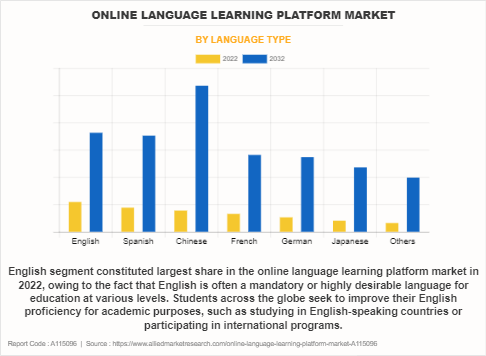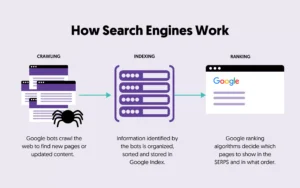Learning a new language can be a rewarding challenge. Teaching one can be just as fulfilling.
Online platforms make this easier for both learners and teachers. Technology has transformed how we approach language learning and teaching. Gone are the days of relying solely on textbooks or classroom settings. Online platforms offer a flexible, interactive way to connect with native speakers and experienced teachers from around the world.
These platforms cater to all skill levels, from beginner to advanced. They provide resources, tools, and communities that enhance the learning experience. Whether you want to learn Spanish, French, Mandarin, or any other language, there’s an online platform that can help you. For teachers, these platforms provide a unique opportunity to reach a global audience. Let’s explore how these online platforms are changing the world of language learning and teaching.

Credit: www.alliedmarketresearch.com
The Rise Of Online Language Learning
Learning and teaching languages online has become very popular. Many people use these platforms to learn a new language. The rise of online language learning has made it easier for everyone. It has changed how we learn and teach languages. This blog will discuss the growth in digital education and the impact of technology on language acquisition.
Growth In Digital Education
Digital education has grown rapidly in recent years. Many people now prefer online learning because it is flexible and convenient. Online platforms offer many tools and resources to help learners. These platforms make it easy to access materials from anywhere. Here are some reasons why digital education is growing:
- Flexibility: Learn anytime, anywhere.
- Variety of courses: Many languages to choose from.
- Affordable: Often cheaper than traditional classes.
- Interactive tools: Games, quizzes, and videos.
Many online platforms provide personalized learning experiences. This means lessons are tailored to the learner’s needs. For example, some platforms use AI to adjust the difficulty level. This helps learners stay motivated and engaged. Online communities also play a big role. Learners can interact with each other. They can practice speaking and get feedback from peers.
Impact Of Technology On Language Acquisition
Technology has greatly impacted how we learn languages. Interactive apps and online courses are now common. These tools make learning more engaging and effective. Here are some ways technology impacts language acquisition:
- Interactive apps: Fun and engaging way to learn.
- Online courses: Accessible and flexible.
- Virtual classrooms: Real-time interaction with teachers.
- Language exchange platforms: Practice speaking with native speakers.
Virtual reality (VR) is another exciting development. VR can create immersive language experiences. This helps learners practice in real-life situations. For example, they can visit a virtual market and practice buying items. Artificial intelligence (AI) is also used in language learning. AI can provide personalized feedback. It can correct pronunciation and suggest improvements. This makes learning more efficient.

Credit: academylms.net
Popular Online Language Platforms
Learning a new language opens doors to different cultures and opportunities. With technology, there are many online platforms to help with this. These platforms make learning and teaching languages easier and more accessible. Some of the most popular ones include Duolingo, Babbel, and Rosetta Stone. Each has unique features and methods to help users learn effectively.
Duolingo
Duolingo is one of the most popular language learning platforms. It uses a game-like approach to make learning fun. Users can learn many languages, from Spanish to Japanese. The app breaks lessons into small, manageable units. This helps users stay engaged.
Key Features:
- Free to use, with optional premium features.
- Interactive lessons with immediate feedback.
- Progress tracking and rewards system.
Duolingo also offers a community forum. Here, users can ask questions and share tips. This makes learning more interactive and social. The platform is suitable for beginners and intermediate learners. It is available on both web and mobile.
Babbel
Babbel is another popular language learning platform. It focuses on practical conversation skills. The lessons are designed by language experts. This ensures high-quality content. Babbel offers courses in 14 different languages.
Key Features:
- Subscription-based model with a free trial.
- Lessons tailored to the user’s native language.
- Speech recognition technology to improve pronunciation.
Babbel’s lessons are short, about 10-15 minutes each. This makes it easy to fit learning into a busy schedule. The platform also provides cultural insights. This helps users understand the context of the language. Babbel is available on both web and mobile.
Rosetta Stone
Rosetta Stone is a well-known name in language learning. It uses an immersive method. This means users learn through pictures and sounds, not translations. This approach helps users think in the new language.
Key Features:
- Subscription-based model with different plans.
- Speech recognition technology to improve pronunciation.
- Live tutoring sessions available.
Rosetta Stone offers courses in 24 languages. The lessons are designed to build speaking, reading, writing, and listening skills. The platform is suitable for all levels, from beginners to advanced learners. Rosetta Stone is available on both web and mobile.
Interactive Learning Methods
Online platforms make learning and teaching languages more accessible. Interactive learning methods are key to engaging students. They help learners practice skills in fun ways. These methods include gamification and real-time feedback. Both can boost motivation and improve language skills.
Gamification In Language Learning
Gamification uses game elements to make learning more enjoyable. It can include points, badges, and leaderboards. These elements motivate learners to practice more. They also help track progress.
Here are some benefits of gamification:
- Increased engagement – Games are fun and keep learners interested.
- Improved retention – Repetition in games helps remember new words and phrases.
- Immediate rewards – Points and badges provide instant feedback.
Many platforms use gamification effectively. For example, Duolingo and Babbel. They offer interactive lessons with game-like features. These platforms make learning a new language less daunting. They turn it into a fun challenge.
Real-time Feedback Mechanisms
Real-time feedback is crucial in language learning. It helps learners correct mistakes immediately. This ensures they do not repeat errors. It also boosts confidence.
Real-time feedback can come in different forms:
| Type of Feedback | Description |
|---|---|
| Instant Corrections | Corrects mistakes as they happen. |
| Audio Feedback | Helps with pronunciation. |
| Textual Suggestions | Provides alternative words or phrases. |
Platforms like Rosetta Stone and Memrise use real-time feedback. They provide immediate corrections during exercises. This helps learners improve faster. Real-time feedback is a powerful tool. It makes the learning experience more effective.

Credit: www.dexway.com
Community And Social Learning
Learning a new language can be challenging. Online platforms make it easier. These platforms offer various tools. Community and social learning play a big role. They help learners practice and improve. Let’s explore two key aspects: Language Exchange Programs and Online Tutoring Communities.
Language Exchange Programs
Language exchange programs are a great way to learn. They connect people from different countries. You can practice with native speakers. This method has many benefits.
First, you get real-life practice. Speaking with a native speaker helps you learn faster. You can correct mistakes quickly. Second, it’s a cultural exchange. You learn about the culture too. This makes learning more interesting.
Here are some benefits of language exchange programs:
- Real-life conversations
- Quick feedback on mistakes
- Cultural exchange
- Flexible schedules
- Free or low-cost options
Many platforms offer language exchange. Some popular ones include Tandem, HelloTalk, and Speaky. They have millions of users. You can find a partner easily. These platforms offer text, audio, and video chat. This makes learning more interactive.
Online Tutoring Communities
Online tutoring communities are another effective way to learn. They connect learners with professional tutors. Tutors provide structured lessons. This helps in systematic learning.
Online tutoring has many advantages. First, you get personalized attention. Tutors focus on your needs. Second, lessons are tailored to your level. This ensures you learn at the right pace. Third, tutors can provide homework and practice exercises. This helps reinforce learning.
Here are some key benefits of online tutoring communities:
- Personalized attention
- Structured lessons
- Custom-tailored to your level
- Homework and practice exercises
- Flexible scheduling
Popular online tutoring platforms include iTalki, Preply, and Verbling. These platforms have thousands of tutors. You can choose based on your preferences. Tutors are available for different languages and levels. They also offer trial lessons. This helps you find the right tutor.
Customization And Personalization
Learning a new language online has become more popular. Online platforms offer many features. Customization and personalization are two key factors. These features help learners meet their goals. They also ensure that teaching methods suit each student. This blog post explores how tailored learning paths and adaptive learning technologies are used in online language platforms. These innovations make language learning more effective and enjoyable.
Tailored Learning Paths
Tailored learning paths are designed to fit the needs of each learner. They ensure that lessons are relevant and engaging. Below are some advantages of tailored learning paths:
- Personalized Content: Lessons are based on the learner’s interests.
- Flexible Pace: Learners can progress at their own speed.
- Goal-Oriented: Paths are created to meet specific goals.
Online platforms use data to create these paths. They analyze the learner’s progress. This helps in identifying strengths and areas that need improvement. Here is a simple table showing how tailored learning paths work:
| Feature | Description |
|---|---|
| Assessment | Initial tests determine the learner’s level. |
| Customized Lessons | Lessons are tailored based on interests and goals. |
| Feedback | Regular feedback helps to improve learning. |
| Progress Tracking | Tracks progress and adjusts lessons accordingly. |
Adaptive Learning Technologies
Adaptive learning technologies use algorithms to enhance learning. These technologies adjust lessons based on the learner’s performance. Below are some key features:
- Real-Time Adjustments: Lessons change based on the learner’s answers.
- Interactive Content: Engaging activities help retain interest.
- Instant Feedback: Learners receive feedback immediately.
This technology makes learning more efficient. It ensures that learners do not waste time on material they already understand. Here are some examples of adaptive learning technologies:
- AI Tutors: Virtual tutors provide personalized assistance.
- Smart Quizzes: Quizzes adjust difficulty based on performance.
- Dynamic Lessons: Lessons change in real-time to suit the learner’s needs.
These technologies make language learning more effective. They provide a customized experience for each learner. Adaptive learning technologies are a key part of modern online language platforms.
Challenges Of Online Language Learning
Online language platforms have changed the way we learn. People can now study languages anywhere, anytime. But, online learning has its own challenges. One of the main issues is staying motivated. Another big problem is dealing with language barriers. Let’s explore these challenges.
Maintaining Motivation
Keeping motivation high is hard for many learners. Online language learning requires discipline. Without a teacher in front of you, it is easy to get distracted. This is why many learners struggle to stay on track.
Here are some tips to stay motivated:
- Set clear and achievable goals.
- Track your progress regularly.
- Join online study groups. This makes learning more social and fun.
- Reward yourself for small achievements.
Another way to keep motivation high is by changing your study methods. If you usually read, try listening to podcasts. If you like watching videos, switch to interactive exercises. Variety keeps learning interesting.
Dealing With Language Barriers
Language barriers can be tough. Especially for beginners. Understanding native speakers is often the hardest part. They speak fast and use slang. This can be frustrating.
Here are some strategies to overcome language barriers:
- Use language learning apps with translation features.
- Watch movies with subtitles. This helps with listening skills.
- Practice speaking with native speakers online.
Another useful tool is a language exchange partner. You teach them your language, and they teach you theirs. This is a great way to practice speaking and learn new phrases.
Patience is key. Language learning takes time. Do not get discouraged by barriers. With practice, you will improve. Keep practicing and stay positive.
The Role Of Ai In Language Learning
Online platforms for learning and teaching languages are growing fast. They bring people from different parts of the world together. The role of AI in language learning is becoming very important. AI tools help make learning easier, faster, and more fun. They offer new ways to practice and improve language skills.
Chatbots For Practice
Chatbots are one of the most popular AI tools. They help with language practice. These bots can talk with you anytime. They never get tired. You can practice speaking and writing with them. This can help you get better at conversations.
There are many benefits of using chatbots:
- Availability: Chatbots are available 24/7. You can practice whenever you want.
- Immediate Feedback: They give instant feedback. This helps you learn from your mistakes quickly.
- Variety of Topics: Chatbots can talk about many topics. This helps you learn new words and phrases.
Here is a simple table showing how chatbots can help:
| Feature | Benefit |
|---|---|
| 24/7 Availability | Practice anytime |
| Instant Feedback | Learn quickly |
| Variety of Topics | Expand vocabulary |
Ai-driven Learning Insights
AI can also provide important learning insights. These insights help you understand your progress. They show your strengths and weaknesses. AI can track your performance over time. It can suggest areas where you need more practice.
Some of the key insights AI can offer include:
- Performance Tracking: Keeps track of your learning progress.
- Personalized Recommendations: Suggests lessons based on your needs.
- Error Analysis: Shows common mistakes you make.
These insights can help you focus on important areas. They can guide you on what to study next. This makes your learning more efficient.
AI tools are powerful. They bring many benefits to language learning. They offer new ways to practice and improve. They provide helpful insights. This makes learning languages easier and more fun.
Future Trends In Language Education
Online platforms for learning and teaching languages have become extremely popular. They offer flexibility, accessibility, and a variety of resources. As technology evolves, these platforms are also changing. Future trends in language education are shaping the way people learn and teach. This blog explores some of these exciting trends.
Virtual Reality Experiences
Virtual reality (VR) is transforming language education. It creates immersive environments where learners can practice languages. Imagine walking through a market in Paris or a street in Tokyo. These experiences make learning more engaging and realistic.
Benefits of VR in language learning include:
- Enhanced Engagement: Learners are more interested and focused.
- Practical Application: Practice conversations in real-world settings.
- Cultural Exposure: Understand cultural contexts and nuances.
VR tools provide a safe space for learners to make mistakes. They can practice without fear of judgment. This boosts their confidence. VR is especially helpful for pronunciation and listening skills. It offers immediate feedback and corrections.
Challenges of VR in education:
- Cost: VR equipment can be expensive.
- Accessibility: Not everyone has access to VR technology.
- Technical Issues: VR systems require strong internet and hardware.
Despite these challenges, VR is a promising tool. Its potential to make language learning more interactive is immense.
Integration Of Ai Tools
Artificial Intelligence (AI) is another trend in language education. AI tools are making learning more personalized and efficient. These tools adapt to the learner’s pace and style. They provide customized lessons and feedback.
Common AI tools in language learning:
| Tool | Function |
|---|---|
| Chatbots | Simulate conversations for practice. |
| Speech Recognition | Helps with pronunciation and speaking skills. |
| Language Translation | Provides instant translations. |
AI tools offer several advantages:
- Personalization: Tailored lessons for each learner.
- Efficiency: Quick responses and feedback.
- Accessibility: Available anytime, anywhere.
Drawbacks of AI tools:
- Lack of Human Touch: Sometimes, human interaction is necessary.
- Accuracy Issues: AI is not always perfect.
- Privacy Concerns: Data security is a major concern.
Overall, AI tools are enhancing the learning experience. They are making language education more accessible and effective.
Frequently Asked Questions
What Is An Online Language Learning Platform?
An online language learning platform is a digital tool for learning languages. It offers interactive lessons, exercises, and resources. Users can learn at their own pace and practice with native speakers.
How Do Online Language Platforms Work?
Online language platforms provide structured courses and interactive activities. Users can access lessons, quizzes, and practice sessions. Many platforms also offer live tutoring and community forums.
Are Online Language Platforms Effective?
Yes, online language platforms can be very effective. They offer flexible learning schedules and personalized content. Consistent practice and interaction with native speakers enhance learning outcomes.
Can I Teach Languages Online?
Yes, many platforms allow you to teach languages online. You can create and sell courses. Some platforms also offer opportunities for live tutoring.
Conclusion
Learning a new language online is now easier than ever. These platforms offer flexibility. They provide access to diverse teaching methods. Students can learn at their own pace. Teachers can reach a wider audience. Both benefit from interactive tools. The future of language learning looks bright.
Embrace these online resources. Enhance your language skills today.
Ms.Sultana brings over 16 years of expertise working with global Clients by providing different skills and Services. For the last 5 years working as an Affiliate marketer, specializing in high-ticket campaigns that drive exponential growth. She holds a degree in Computer Science and Engineering as well as achieved many more skills certificates from different institute/academies/Platform. As part of the Elite Global Marketing team, Sultana has helped clients generate millions in revenue through strategic partnerships, innovative funnels, and data-driven insights.
























